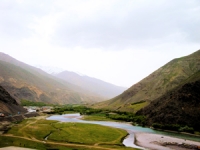Water sharing between Central Asian countries has been conflicting for quite a long time already.
Reliving the past in a changed environment: Hydropower ambitions, opportunities and constraints in Tajikistan
In Central Asia, various arguments, ranging from a unifying purpose to political control to conflict potential, have been made about the relationship between downstream water utilisation and the upstream water control infrastructure. This paper analyses the construction and utilisation of the Nurek dam in Tajikistan during and after the break-up of the Soviet Union. The political and socio-economic changes that ensued after independence influenced the utilisation of the water control infrastructure. The new economic reorientation of Tajikistan demanded by the break-up caused concerns to downstream riparian states. The conflict potential is based not on water resource allocation, but on the utilisation of water for energy production, its control and transmission infrastructure. Even though there is conflict potential, the situation could be turned into a win–win situation for all the riparian states.





